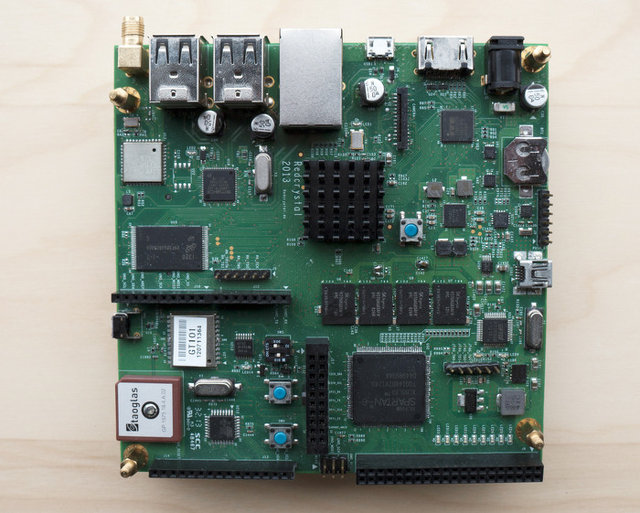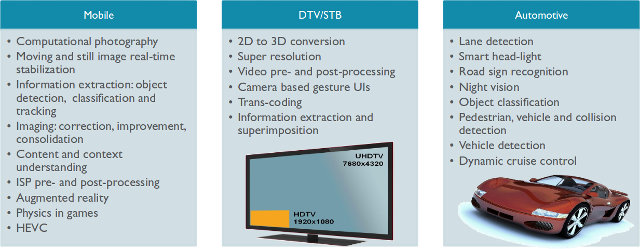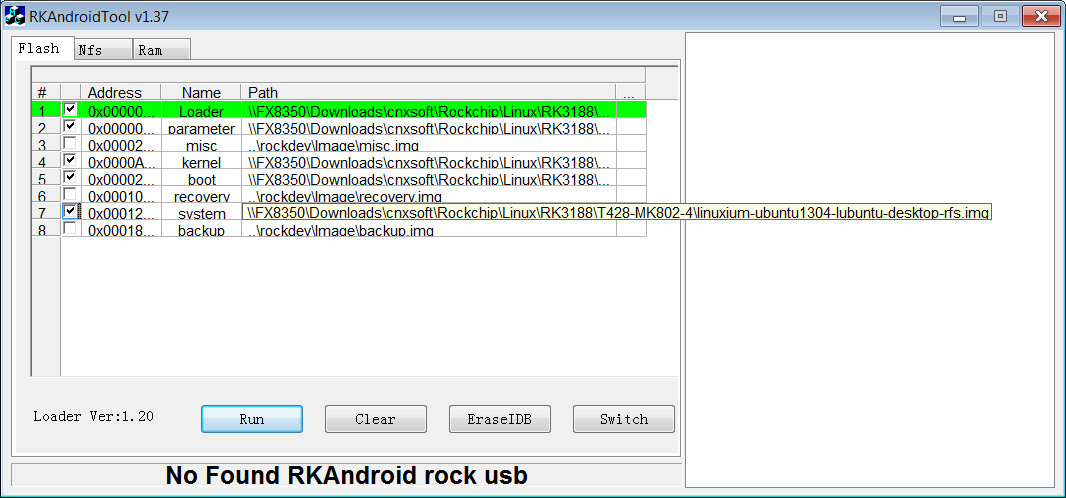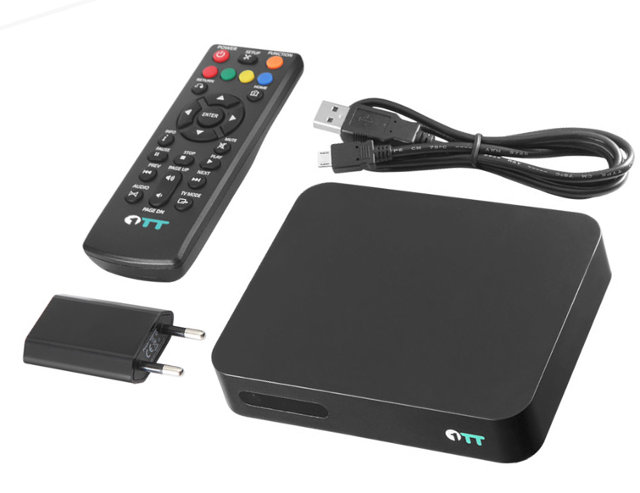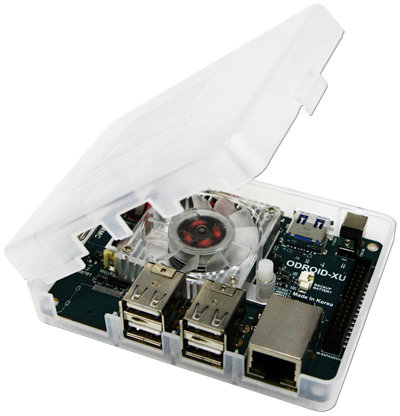A couple of week ago Geniatech released the source for XBMC for Android, and today I’ve been informed they’ve released an XBMC Linux image for their media players based on AMLogic AML8726-MX dual core Cortex A9 SoC, just a few days after the release of MX Linux v1.00 RC1 working for MX2REF, G18REF and g02refDongle (These are not product names, but board codes that can also be found in ro.product.device or ro.product.board in build.prop of Android firmware). You can download MX_BOX-Linux_XBMC20131205.zip which is said to contain the XBMC Linux image for ATV1200, ATV520, ATV400, ATV360, etc… However, it’s said not to work for HDMI dongles such as ATV120, contrary to MX Linux. I haven’t been able to download the file within a reasonable amount of time, so I haven’t been able to check the content, and installation instructions. An anonymous source told me it was likely Geniatech just took the community […]
Crystal Board Combines Rockchip RK3188 ARM SoC with Xilinx FPGA and Arduino Compatible Board (Crowdfunding)
Red Crystal, a German startup, has just introduced the Crystal Board, a 3-in-1 development board with Rockchip RK3188 SoC running Linux or Android, an Arduino UNO compatible board, and a Xilinx Spartan-6 FPGA. The concept is a similar to the UDOO board, but adds an FPGA. The company has launched a Kickstarter campaign to gather funds to manufacture the Lite and Pro versions of the board for respectively $149 and $179. Crystal Board specifications (Lite and Pro versions): SoC – Rockchip RK3188 ARM Cortex-A9 quad core up to 1.8Ghz + Mali-400 MP4 GPU MCU – Atmel Atmega328 SMD FPGA – Xilinx Spartan6 XC6SLX9 with 9152 logic cells System Memory – 2GB DDR3 @ 1066MHz (1GB DDR3 @ 1066MHz for Lite version) Storage – micro SD card slot, SPI flash Video Output – HDMI 1.4 Connectivity: 10/100M Ethernet port Wi-Fi 802.11b/g/n with antenna. Dual band for Pro version, 2.4GHz band for […]
AIRTAME is a Wi-Fi Display HDMI Dongle for Windows, Linux, and Mac (Crowdfunding)
Earlier today, I wrote about Tronsmart T1000 Mirror2Tv, a $30 Wi-Fi Display adapter that can mirror the display from Android, iOS, and Windows devices and computers to your HDMI TV via Wi-Fi, and I’ve been informed a somewhat similar device called AIRTIME had a very successful Indiegogo campaign albeit selling for over $100 including shipping, and with shipping expected for May 2014, so I decided to have a closer look. AIRTIME specifications have not been fully release, but we still get some information: Processor – ARM @ 1GHz System Memory – 512MB RAM Wi-Fi – 802.11 b/g/n Video Output – HDMI 1.4 with CEC and MHL – Up to 1080p resolution Audio – 2 channel stereo with variable bit rate, work in progress for surround sound 5.1 support USB – 1x micro USB for power, 1x USB host port for accessories Power Consumption – About 500ma @ 5V via MHL […]
Practical Applications and Benchmarks of GPU Computing via RenderScript and OpenCL with ARM Mali-T6XX GPU
Since the announcement of ARM Mali-T604 in 2010, ARM has explained that GPGPU (General Purpose computing on GPU), aka GPU Compute, would be one of the key features of their new Mali graphics processor, and the company now expects GPGPU to become mainstream in embedded and mobile devices in 2014 and beyond. I’ve just come across a presentation by Roberto Mijat, technical marketing manager at ARM, entitled “Unleashing the benefits of GPU Computing with ARM Mali” which shows practical applications and use cases where the use of RenderScript, or OpenCL can make massive performance improvements, at much lower power consumption, over the same parallel tasks processed by the CPU only. Let’s have a look at some of the most interesting slides. GPU compute can be used for multiple applications in mobile, multimedia, and automotive sectors. GPU Compute for H.265 / HEVC HEVC aka H.265 is the next generation codec providing […]
How-to Install and “Hack” Linux on T428 or MK802 IV mini PCs
PicUntu 4.5 installer is probably the easiest method to install Ubuntu on a Rockchip RK3188 based mini PC, but if you want a little more flexibility I’ll provide another method to install Linux on T428, MK802 IV or compatible devices, as well as links to go further: dual boot Android / Linux, create your own official distro, status of Mali-400 GPU support in RK3188… The method below is not new, as it was posted by Linuxium (Ian Morrison) in Freaktab in September, but this is the first time I’ve taken the time and managed to run Linux on Rockchip RK3188, and I’ll provide some more detailed steps. Prerequisites Even though in some cases it’s possible to install Rockchip firmware from Linux, AFAIK the tools available in Linux lack supports for the parameter and loader files, so ironically, you’ll need a Windows XP/7/8 machine to install Linux in your mini PC. […]
Cloud Media 1OTT Internet Media Player Runs Linux on Cavium ARM11 SoC
Cloud Media is mostly known for their Linux based Pop Corn Hour media players. but recently they started offered a free media player called FreeOTT via ISPs or Facebook giveaways. This little box gives direct access to online video channels. I reviewed FreeOTT a few months ago, and found the interface to be sluggish (possibly because of my Internet connection), audio was not working on my TV. So overall not a very good experience from my side, but they’ve upgraded the firmware with features like Miracast, DLNA, and “iOSCast” (Airplay?), possible improving performance, and recently added CCTV 1 to 15, except CCTV 4, to the list of channels. FreeOTT was difficult to source since you can only get it for free, so the company has just launched 1OTT player based on what appears to be the same hardware platform, but with a larger enclosure. 1OTT Specifications: Media Processor – Cavium CELESTIAL […]
Hardkernel ODROID-XU Lite Development Board Features Exynos 5410 @ 1.4GHz for $139
Hardkernel ODROID-XU development board launched for $149, and now costs $169. Hardkernel has recently announced a cost-down version named ODROID-XU Lite, with almost exactly the same specifications: Samsung Exynos 5410 Octa Core big LITTLE Cortex A15/A7 processor, 2GB RAM, eMMC storage, etc.. The only differences are that the Cortex A15 cores are clocked up to 1.4GHz instead of 1.6GHz, and you’ll save $30, as the Lite version costs $139. Here’s a reminder of the specifications: SoC – Samsung Exynos5 Octa Cortex-A15 @ 1.4GHz and Cortex-A7 big.LITTLE processor with PowerVR SGX544MP3 GPU System Memory – 2GB LPDDR3 RAM Storage – micro SD slot, eMMC 4.5 connector Video Output – micro HDMI + MPI LCD interface and Touch screen I2C ports (IPEX-40PIN) Audio – micro HDMI, headphone jack, MAX98090 Audio Codec Connectivity – 10/100M Ethernet via USB 2.0 (LAN9730) USB – 1x USB 3.0 Host, 1x USB 3.0 OTG, and 4x USB […]
XBMC MX Linux v1.00 RC1 for AMLogic AML8726-MX Devices
Developer “croniccorey” has recently announced the release of MX Linux v1.00 RC1, an XBMC Linux image for media players based on AMLogic AML8726-MX, on XDA Developers’ Forums. This release supports G18REF and MX2REF devices (See build.prop in Android) such as Matricom G-Box Midnight MX2, and a test image has also been released for g02refDongle devices such as Droid Stick A2. Checking the MTD layout Before starting the installation, you may want to check your flash partitions in order to avoid bricking your device: Install and run Terminal Emulator Run the command below to make sure your partition table is compatible with the image:
|
1 2 3 4 5 6 7 8 9 10 11 |
[root@amlogic /]# cat /proc/mtd dev: size erasesize name mtd0: 00400000 00200000 "ubootenv" or "bootloader" mtd1: 00800000 00200000 "logo" mtd2: 00800000 00200000 "aml_logo" mtd3: 00800000 00200000 "recovery" mtd4: 00800000 00200000 "boot" mtd5: 40400000 00200000 "system" mtd6: 20000000 00200000 "cache" mtd7: 10000000 00200000 "backup" mtd8: 18c800000 00200000 "userdata" |
If your partition table is different, do not install the default image for MX2REF / G18REF. However, If you’ve got Matricom Android firmware version 1.1.6 or greater or WJB’s Linux builds from November 21 2013 onwards, the MTD layout will be different, and you’ll need to […]



